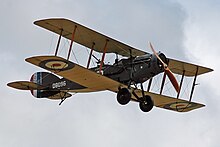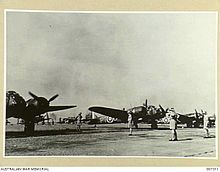
Number 23 Squadron is a squadron of the Royal Air Force responsible for 'day-to-day space operations', having been reformed in January 2021, as the first "space squadron". Up until its disbandment in October 2009, it operated the Boeing Sentry AEW1 Airborne Warning And Control System (AWACS) aircraft from RAF Waddington, Lincolnshire.

No. 1435 Flight Royal Air Force, commonly abbreviated 1435 Flt, is an independent aircraft flight of the Royal Air Force (RAF). Currently operating the Eurofighter Typhoon FGR4, it is based at RAF Mount Pleasant in the Falkland Islands. Its role is to provide air defence for the Falkland Islands, South Georgia and the South Sandwich Islands. Four aircraft are permanently based in the islands, whilst their pilots and groundcrew are cycled through No. 1435 Flight from the various Typhoon squadrons in the United Kingdom, providing a 24-hour, 365-day quick reaction alert (QRA) role.
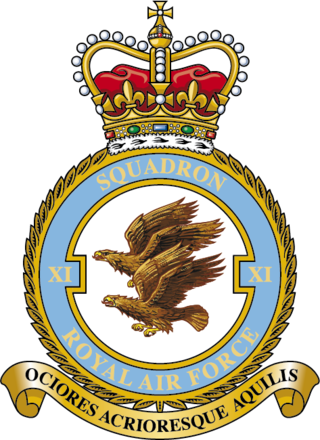
No. 11 or XI Squadron, is "the world's oldest, dedicated fighter unit" and continues the traditions established by the similarly numbered Royal Flying Corps squadron, established in 1915. After a history of equipment with numerous different aircraft types, the squadron most recently operated the Tornado F3 until 2005 when it was disbanded. It was reactivated in 2006 to operate the Typhoon F2, receiving its first aircraft on 9 October 2006.
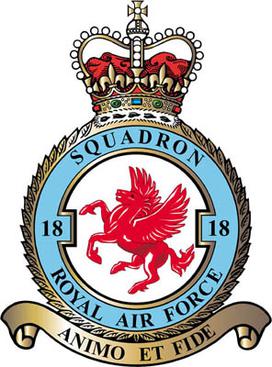
No. 18 Squadron of the Royal Air Force operates the Boeing Chinook from RAF Odiham. Owing to its heritage as a bomber squadron, it is also known as No. 18 (B) Squadron.

No. 27 Squadron of the Royal Air Force operates the Boeing Chinook from RAF Odiham.

Number 28 Squadron, also known as No. 28 Squadron or No. 28 (AC) Squadron, is a squadron of the Royal Air Force. Based at RAF Benson, it serves as the RAF's Operational Conversion Unit for the Westland Puma HC2 and Boeing Chinook HC5/6/6A helicopters.
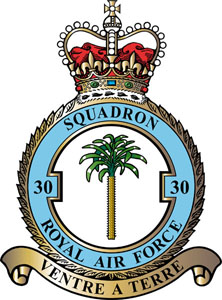
No. 30 Squadron of the Royal Air Force operates the Airbus A400M Atlas transport aircraft and is based at RAF Brize Norton, Oxfordshire.

No. 84 Squadron of the Royal Air Force is at present a Search and Rescue Squadron based at RAF Akrotiri, using the Westland/Airbus Helicopters Puma HC Mk.2 helicopter. The squadron transitioned from the previously operated Bell Griffin HAR.2 to the Puma HC.2 in 2023.

No. 488 Squadron was the name given to two distinct Royal New Zealand Air Force squadrons during the Second World War. Both were formed under Article XV of the Empire Air Training Scheme and served under the operational command of the Royal Air Force.

No. 34 Squadron RAF was a squadron of the Royal Air Force. During the First World War it operated as a reconnaissance and bomber squadron and in the 1930s operated light bombers. It was re-equipped with fighter-bombers in the later half of the Second World War and in the post-war period was reformed four times; first as a photo-reconnaissance unit, then anti-aircraft co-operation, then as a jet fighter squadron through the 1950s. It was last active in the 1960s, as a Blackburn Beverley transport squadron.
Royal Air Force Bircham Newton or more simply RAF Bircham Newton is a former Royal Air Force station located 2.1 miles (3.4 km) south east of Docking, Norfolk and 13.4 miles (21.6 km) north east of King's Lynn, Norfolk, England.

No. 21 Squadron of the Royal Air Force was formed in 1915 and was disbanded for the last time in 1979.
No. 36 Squadron of the Royal Flying Corps was formed in 1916 at Cramlington Aerodrome, just north of Newcastle-upon-Tyne, in order to defend a section of the North East coast from German Zeppelin attacks at night. Disbanded shortly after the end of WWI, it was reformed as a torpedo bomber unit and served in Singapore and Burma in the 1930s, seeing action in 1941–42 when Japan entered the war. After re-equipping with Vickers Wellingtons, it served the remainder of the war as an anti-submarine unit, in the Indian Ocean, the Mediterranean, and later in UK home waters. After WWII the squadron operated intermittently in various roles, including maritime reconnaissance, and later as a transport unit flying C-130 Hercules until it was disbanded for the last time in 1975.
No. 52 Squadron was a Royal Air Force squadron that saw service in both World War I and World War II.
No. 48 Squadron was a Royal Air Force squadron that saw service in both the First and Second World Wars.
No. 53 Squadron was a Royal Air Force squadron that saw service in both the First and Second World Wars.

No. 60 Squadron of the Royal Air Force was formed in 1916 at Gosport. It is currently part of No. 1 Flying Training School based at RAF Shawbury in Shropshire flying the Airbus H135 Juno HT.1.

No. 500 Squadron AAF was a Royal Air Force flying squadron. It was initially formed in 1931 as a Special Reserve squadron and in 1936 became part of the Auxiliary Air Force, at this time based at Manston and Detling.
No. 113 Squadron began service in 1917 with the Egyptian Expeditionary Force commanded by General Edmund Allenby. Initially, the squadron was a unit of the Royal Flying Corps, serving during the Sinai and Palestine Campaign and as a reconnaissance, army cooperation, bomber, fighter, transport and missile operation squadron during its existence.
No. 139 (Jamaica) Squadron RAF was a Royal Air Force Squadron that was fighter unit in World War I and a bomber unit from World War II until the 1960s.
